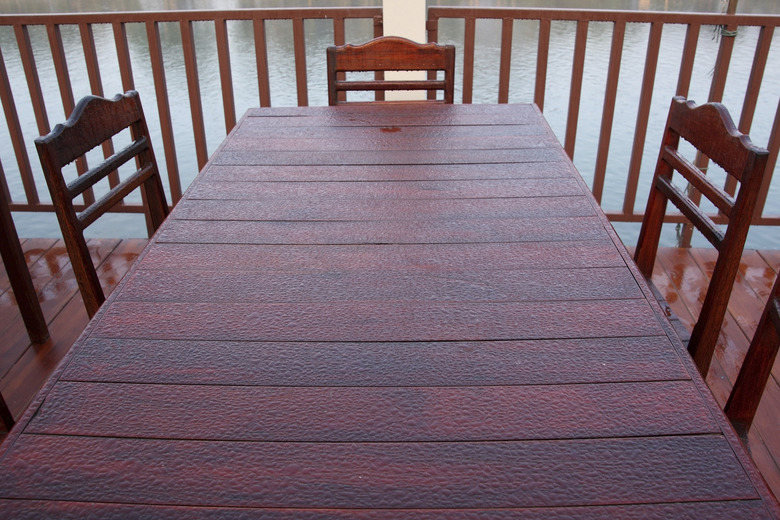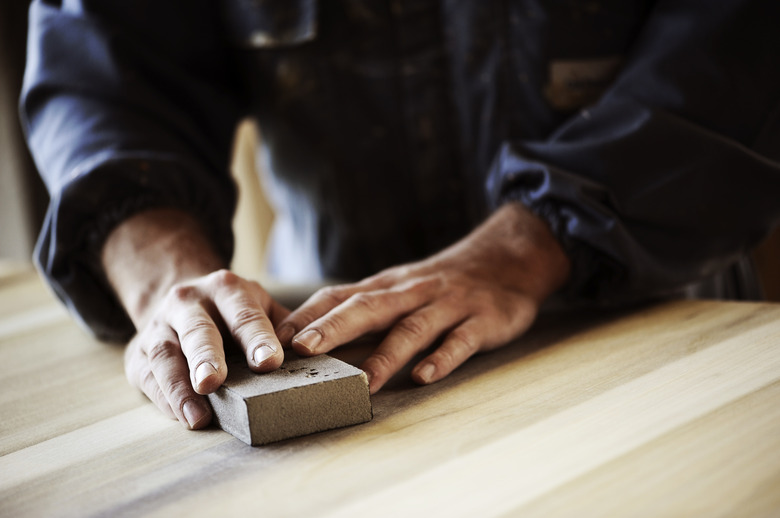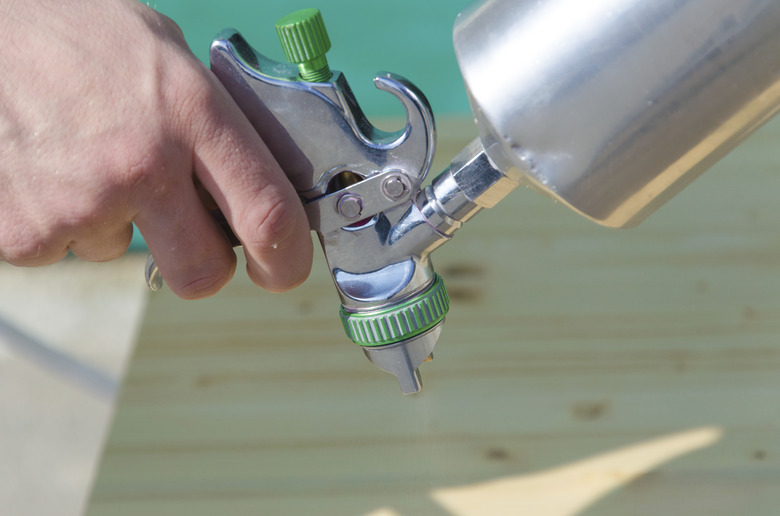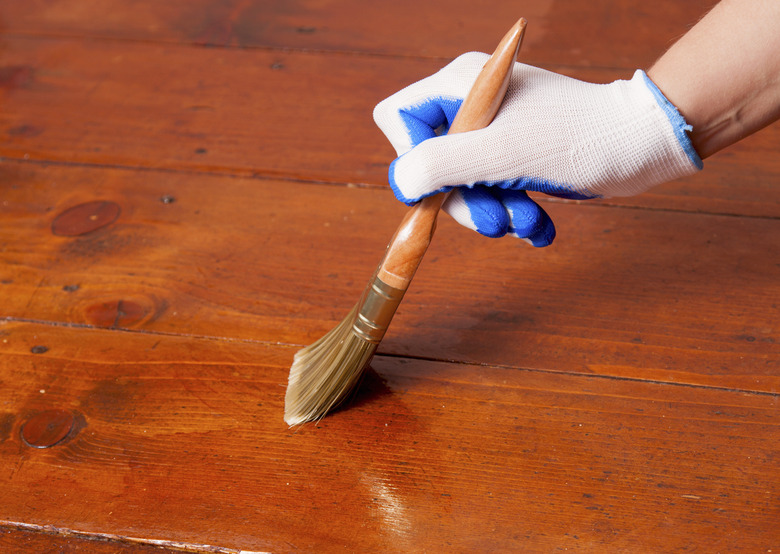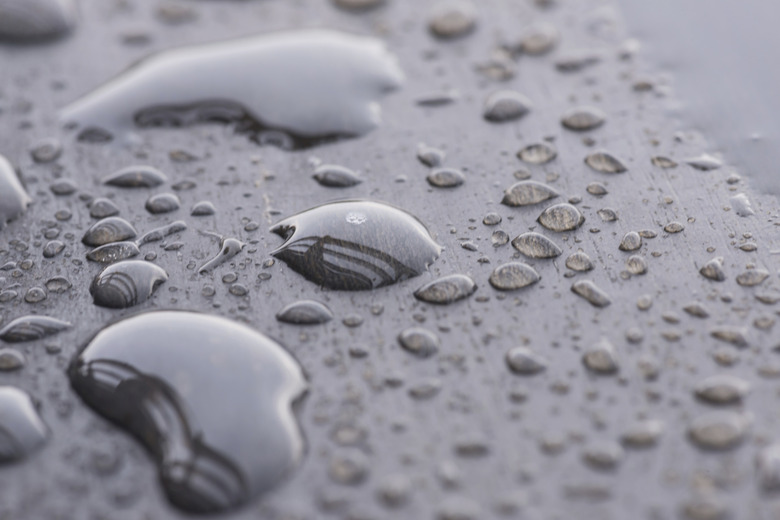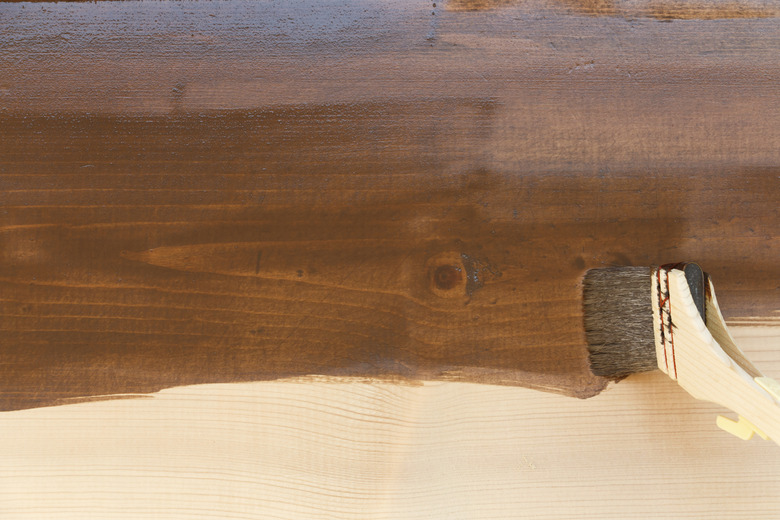The Best Way To Seal A Wood Tabletop
Tabletop sealing is a process involving sanding, spraying, brushing or wiping a specific product on the table to protect it. You don't need to use products such as sanding sealer, it's an unnecessary step. All products seal because they close pores in the wood. Skip the sealer and use lacquer to seal a tabletop for the best results. All finishing products contain chemicals that can cause health issues. Protect yourself by wearing gloves, breathing and eye protection.
Preparation Is Important
Preparation Is Important
Preparation is key to sealing any tabletop. If the table has been previously finished, all of the old finish must be removed before it can be sealed. Check along edges or underneath to determine if the tabletop is solid wood or veneer before proceeding. Don't attempt to sand out deep gouges or scratches if the tabletop is veneer. Veneered tables have only a thin layer of wood that's easy to damage by sanding. Sand carefully and deliberately, examining your work frequently. Further preparation should include filling dents, holes and gouges with an appropriate wood dough, putty or filler. Sand the top with long strokes parallel with the grain using 100-grit sandpaper. Never sand at an angle or perpendicular to the grain pattern. Re-sand the tabletop with successively higher-grit sandpapers for a glassy finish. Typically re-sanding with 120-grit paper after 100-grit is sufficient. Position the table so that light reflects off the surface. If you can see blotches, light scratches or rough spots, sand again until the tabletop is consistently smooth and has the appearance of bare wood.
Lacquer Works Best
Lacquer Works Best
Many professional cabinetmakers, trim carpenters and homebuilders regard lacquer as the best all-around way to seal wood. It dries faster than other top coats and imparts depth to the wood. It won't affect the color of the wood as varnish, shellac or polyurethane will. It's easy to apply with spray guns because it atomizes better than other top coats. Atomized particles are finer, allowing them to penetrate deep and lie down flat. Several types of lacquer are commercially applied including nitrocellulose — which is used on musical instruments — but the most convenient and easiest to use is pre-catalyzed lacquer. This type of lacquer consists of solvents that evaporate to form a tough, durable finish. Apply a thin coat to the tabletop with a spray gun or a brush and allow it to dry. Sand the surface by hand with 120-grit sandpaper and follow up with another coat of lacquer. Two coats are sufficient to seal it, but two more coats can be added for more depth.
Varnish Will Suffice
Varnish Will Suffice
Oil-based varnish is a durable, user-friendly product. Other than pre-catalyzed lacquer, it's the product typically used most often by the average woodworker to seal tabletops. It dries more slowly than lacquer, meaning that insects, airborne debris and dust also have extra time to settle into the finish. Varnish is tough, resistant to heat, water and solvents. Varnish contains natural oils, drying agents and synthetic resins. When the drying agents evaporate, the oils undergo a chemical reaction known as polymerization to harden, protect and seal the table. Apply varnish with a brush, sanding lightly between dry coats with 220-grit sandpaper. Two or three coats is typically sufficient to seal a tabletop. If your finish is rough or appears to have small defects, clean the surface by rubbing a tack cloth across it before applying each subsequent coat.
All Other Formulas
All Other Formulas
Other top coats that seal include polyurethane, urethane, shellac or other formulas. Some contain natural products such as insect secretions, acrylic resins, or a combination of solvents and chemicals. All of these products seal and protect, but the drying time — which is extensive on most of them — should be taken into consideration. These types of sealing coats can also impart a yellowish tint to the tabletop. All of these formulas can be applied with a brush or air equipment, but the majority of time a brush is the most user-friendly method to apply these products.
Stain and Wax
Stain and Wax
Some woodworkers swear by oil-based stain and paste wax to seal tabletops. This two-part system has been around for many years as a technique to seal tables. Aficionados rely on it to revive antiques and imitate older table finishes. Oil-based stain consists of natural plant oils such as linseed or tung oil. Also sometimes referred to as Danish oil, this type of stain penetrates deep into the pores of the wood, where it hardens to protect and seal from the inside out. Apply a moderate amount of it to the tabletop with a soft cloth, allow it to remain on the table according to the manufacturer's instructions and wipe it off. Apply another coat for a deeper color. Allow the stain to cure for at least 72 hours. When the stain is dry, apply paste wax with a soft cloth. It takes time and elbow grease, but this type of seal is beautiful and rich. If it gets dull in a few months, apply more wax as needed to keep it fresh.
